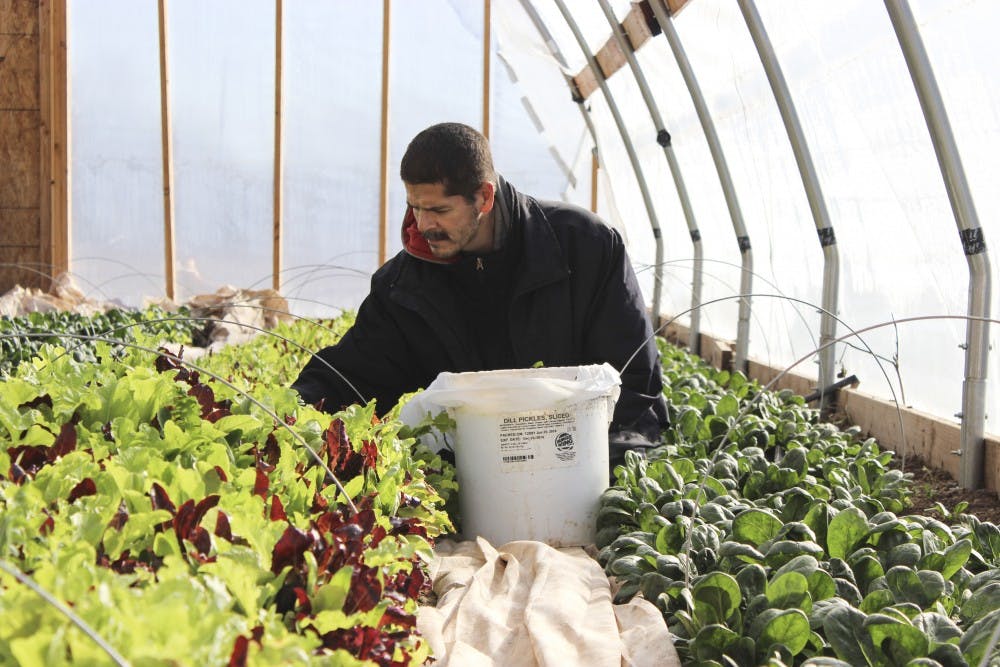“Agua es Vida: Acequias in Northern New Mexico,” currently featured at the Maxwell Museum of Anthropology, highlights a hydro-social cycle that has come to embody New Mexican heritage among the farming community.
Politics, cultural life and sustenance are shown at the museum in a comparative fashion, said Devorak Ramonek, a curator at the Maxwell Museum. The topic of who has a right to water is an ongoing debate contested not only by those engaged with acequias, but also Native American nations and state governmental water management.
“Water in New Mexico is everything,” Ramonek said. “The exhibition tells the story of how people survive here and are here, and the various interactions that occur in this environment.”
The exhibition is designed to highlight the importance of the hydrological cycle in conjunction with the livelihood of acequia farmers in New Mexico.
“Acequias are sustainable, but they do not make the same immediate economic bang that exploitation of water might make,” Ramonek said. “But in the long run, using water in a sustainable way is also going to have economic benefits, especially when decisions get made on a community basis.”
Lorenzo Candelaria, owner of Cornelio Candelaria Organics in the valley of Atrisco, said that 25 farmers make their livelihood off of the Arenal Acequia that he manages. His family has worked these lands for almost 400 years.
Water is distributed according to farmer’s necessities, the size of their terrain and the changing seasons, Candelaria said. This is a traditional form of governance through water; however, its very existence is now being threatened by both the commercial methods of its distribution and the relentless drought in the southwest.
Along with the distribution of water, the maintenance of acequias is a resource for the community to gather and discuss political and religious matters, he said. This includes the ceremonial reverence paid to San Isidro.
“San Isidro has been the patron saint of farmers ever since the Spanish arrived here,” Candelaria said. “The tradition of San Isidro is where as a community we bless the waters of the acequias when the Middle Rio Grande Conservancy District releases the water from the river.”
Ever since the establishment of the Middle Rio Grande Conservancy District, the tradition of water distribution through acequias has been deteriorating, he said.
“Once water rights go into commercial hands, the communities that depend on the acequias struggle for their livelihood,” Candelaria said.
Get content from The Daily Lobo delivered to your inbox
Retention of the river by the MRGCD causes a drop in water pressure for acequias downstream, which means less water is irrigated through the community’s pasture, and fewer crops are able to grow, he said.
“The problem we are having is due to the loss of our water rights. This is happening politically, and it is an uphill battle for us,” Candelaria said.
Society calls for modernized methods of irrigation, but a combination of traditional acequia and modern drip methods has proven beneficial for the farms’ preservation of water, he said.
Academic investigations can benefit the livelihood of acequias, Candelaria said. Through these efforts a new system may be created to benefit the traditional acequia culture.
Bruce Milne, director of UNM’s sustainability studies program, said acequias play an important role for New Mexico’s preservation of biodiversity, as well as a topic of study for the SSP.
“The global concept of sustainability is making sure that everybody has access to basic needs like food, health, water and energy,” he said. “I am a huge advocate for acequias because if we were to replace this irrigation system with another considered to be more efficient, then a great amount of New Mexico’s landscape would start to die off.
Only about 10 percent of the water carried by them evaporates and does not make its way back for human use. However, the other 90 percent is circulated through human use and an entire ecosystem of biodiversity that surrounds the river banks, he said.
“This means having birds, beneficial insects — all kinds of mammals, reptiles, and obviously plants and flowers for bees,” Milne said. “All of that biodiversity strengthens the land.”
The exhibition on display at the Maxwell Museum originated out of a multidisciplinary and multi-institutional effort to document the sustainability, efficacy and meaning of acequias in New Mexico.
“The ultimate conclusion of the study is that acequias in this particular environment are the most sustainable way of using water,” Ramonek said.
Mateo Rocha is a freelance reporter for the Daily Lobo. He can be reached at culture@dailylobo.com or on Twitter @DailyLobo.






